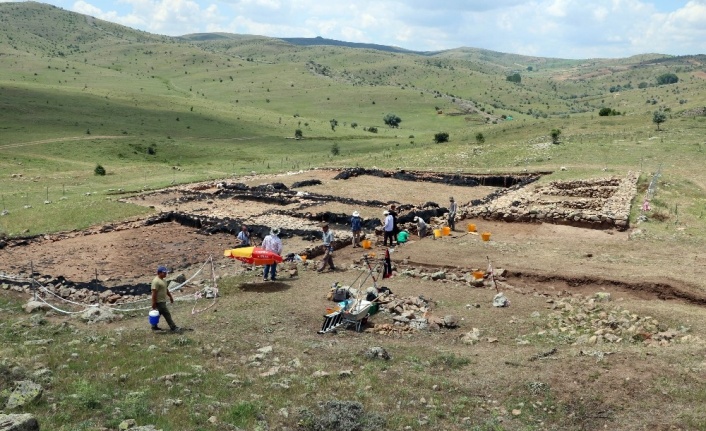Excavations have begun in the ancient city of Pteria, known as the ‘Kerkenes Ruins’, located near the village of Şahmuratlı in the Sorgun district of Yozgat, dating back to 600 BC.
Excavations of the Kerkenes Ruins began in 2022 in the ‘Pteria Ancient City’, which was considered one of the most developed cities of its time, surrounded by 7 kilometers of walls, with a width of 8 meters and a height of 7 meters, which had the widest and most advanced fortification system of its time. Excavations have been carried out for about 30 years in the ancient city of Kerkenes, which is estimated to have been inhabited by civilizations in the Iron Age in 600 BC.
Yozgat Governor Ziya Polat, who examined the works on site, received information about the works from the US Head of Excavation, Archaeologist Prof Dr Scott Branting. After the investigations, Yozgat Governor Ziya Polat, who made a statement to the journalists, said that they will provide all the opportunities to accelerate the excavation work in the Kerkenes Ruins. Governor Polat said, “We are in Kerkenes Ruins, one of the historical centers of Yozgat, the city of Yigits. We have started our excavations. It is an excavation that has been going on for many years and it looks like it will continue. Our request from the excavation team is to expand the excavation process. We need to move a little faster to excavate what is under the ground. “Our excavation director asked us for a way, the road is easy, we will take care of the way. This is one of the important settlements of the Phrygian Civilization. It is one of the first settlements. It is a big place. The largest settlement of its period. That’s why we need to bring this place to tourism. Next week we will have visitors from South Africa.”
Sefa Başer, one of the excavation workers living in the village of Şahmuratlı in Yozgat, said, “There is seasonal excavation work here, this work takes about one and a half months. We work here whenever we get the opportunity and earn our pocket money. The Kerkenes Ruins have a history of 2,600 years. It is necessary for this history to come to light.”
Diana Kazemi, who came from Australia for excavation work, said, “I come from Australia, I am an archeology student, we came here 2 weeks ago and we continue our work in the rooms here.”
